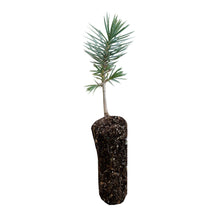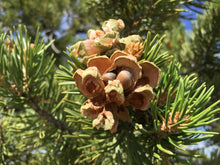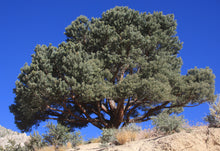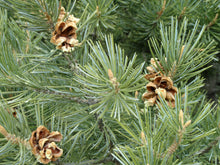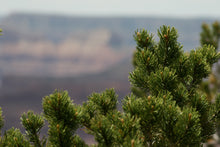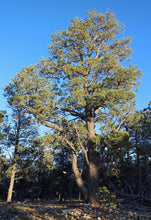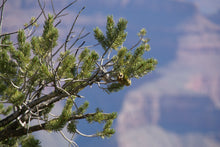
Pinus edulis
-
Grow your own Piñon Pine, a small pine well-suited for container growing, rock gardens, and small yards!
- 100% guaranteed
- Seed-grown on California's Redwood Coast
- Transplanting and care instructions included
 |
Moisture Medium |
 |
Cold Hardiness -15°F |
 |
Light Full Sun / Partial Shade |
 |
Size 20 – 70' tall / 10 – 25' spread |
 |
Lifespan 1,000 yrs |
 |
Growth Rate Slow Growing |
 |
Drought Tolerance High |
 |
Wind Resistance High |
About Piñon Pine
A beautiful, small pine well-suited for container-growing, rock gardens, and small yards, Piñon Pine (Pinus edulis) comes from the desert mountains of California, Arizona, New Mexico, Texas, and Wyoming. Also known as Nut Pine, this lovely tree is characterized by slow, bushy growth and small, roundish, light-brown cones containing large, delicious seeds valued for food.
Despite its hardiness and drought resistance, Piñon Pine is surprisingly uncommon in cultivation. The tallest Pinon Piñe is over 70 feet, but this species usually stays much more compact, growing to typical heights of 10 to 20 feet over the course of decades. For pine nut production, plant several specimens to cross pollinate.
About Jonsteen's Seedlings
All of our trees are seed-grown at our nursery on California's Redwood Coast, which is inspected monthly and licensed by the California Department of Agriculture. Trees can provide a natural barrier against high winds, temperatures, noise pollution and soil erosion, all while benefiting local air quality, wildlife and property values — a Jonsteen seedling will only grow in value and beauty!
About Jonsteen's 100% Guarantee
All of our trees are guaranteed to arrive healthy and in good condition. If your tree perishes despite your honest efforts, we will be happy to replace it with a small-sized seedling for just the cost of shipping/handling. You can learn more about our guarantee and tree replacement policy here.
Seedling Size Chart: Medium
Due to the dynamic nature of actively growing trees, as well as the tremendous variation between species’ growth rates, we rely on the cubic volume of a seedling’s root mass to determine its “size” (Small / Medium / Large / XL). Within each size there is minor variance — the dimensions provided here represent the category minimum. If exact measurements are essential, please contact us about current stock.










